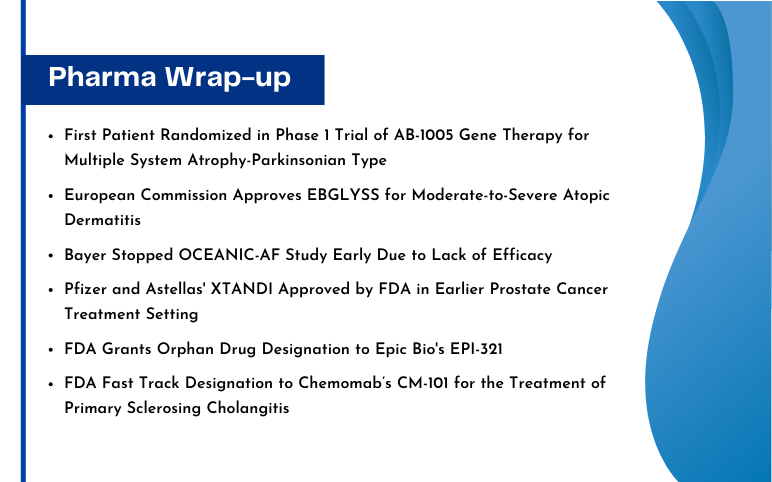Novel Insights of Primary Sclerosing Cholangitis Treatment Market
Sep 02, 2022
Table of Contents
There are a few major unmet needs in the primary sclerosing cholangitis (PSC) treatment market, which include a lack of effective therapies, proven surveillance strategies, tools for early detection of malignancies, impact on quality of life (QoL), and surrogate endpoints in primary sclerosing cholangitis clinical trials.
Although a rare disease, primary sclerosing cholangitis still affects around 30,000 people in the US, 21,000 in the EU5, 9,000 in Nordic countries, and another 1,200 in Japan in 2021. As per DelveInsight’s estimates, the overall primary sclerosing cholangitis prevalence in both genders is subject to increase in the coming years and reach up to approximately 29,000 and 11,000 cases by 2032 in males and females, respectively.
Downloads
Click Here To Get the Article in PDF
Moreover, according to the American College of Gastroenterology, 70% of primary sclerosing cholangitis patients are men, with an average age of 40 at primary sclerosing cholangitis diagnosis. Inflammatory bowel disease affects up to 90% of primary sclerosing cholangitis patients. The more common of the two types of inflammatory bowel disease, ulcerative colitis, affects approximately 87% of primary sclerosing cholangitis patients, while Crohn's disease affects the remaining 13%. In contrast, primary sclerosing cholangitis affects only 4% of all patients with inflammatory bowel disease.
Current primary sclerosing cholangitis treatment landscape: Complicated
Unfortunately, there are no disease-specific approved therapies for primary sclerosing cholangitis treatment. High-dose ursodeoxycholic acid is used for primary sclerosing cholangitis treatment for patients because there is a trend toward increased survival. Dominant bile duct stenosis should be treated endoscopically. However, liver transplantation continues to be the only primary sclerosing cholangitis treatment option for patients with advanced disease. Moreover, ursodeoxycholic acid primary sclerosing cholangitis treatment improves abnormal biochemical tests. It works by increasing the bile flow and preventing liver cell damage, but it does not appear to affect survival or the need for liver transplantation. Additionally, studies have shown that it may be harmful in high dosages.
Besides this, immunosuppressive-based primary sclerosing cholangitis therapies such as glucocorticoids, azathioprine, tacrolimus, and a few others are in use for primary sclerosing cholangitis treatment, especially in PSC patients with additional autoimmune hepatitis (AIH) or IgG4-related sclerosing cholangitis (IgG4-SC).
Although the only intervention, which extends the survival of PSC patients, liver transplantation is costly and invasive. Recurrent primary sclerosing cholangitis (rPSC) is an enduring clinical dilemma. It occurs in 1.8–36.8% of liver transplantation recipients and is associated with a greater need for repeated liver transplantation, a fourfold increased risk of death, and decreased overall survival compared to PSC patients who remain rPSC-free.
Hence, there is an urgent unmet need for a safe and effective primary sclerosing cholangitis therapy that addresses the underlying cause of this multifaceted disease.
Cilofexor: A potential first-approved primary sclerosing cholangitis drug
The primary sclerosing cholangitis market size was valued at ~USD 800 million in 2019 and is projected to reach approximately USD 3,600 million by 2032, at a CAGR of 12%, as per DelveInsight’s estimates.
The major market players in the primary sclerosing cholangitis treatment market are Gilead Sciences, Phenex Pharmaceuticals, HighTide Therapeutics, Dr. Falk Pharma, Mirum Pharmaceuticals, Pliant Therapeutics, Inc, NGM Biopharmaceuticals, CymaBay Therapeutics, Chemomab Therapeutics, among others.

There is a list of late-stage assets with distinct MoA being developed for treating PSC patients and are expected to enter the primary sclerosing cholangitis treatment market of the US, EU5 (Germany, Italy, France, Spain, and the United Kingdom), Nordic countries (Sweden, Finland, Denmark, and Norway), and Japan in the next few years. Few of the molecules in the primary sclerosing cholangitis pipeline include cilofexor (Gilead Sciences/Phenex Pharmaceuticals), Volixibat (Mirum Pharmaceuticals, Inc.), norursodeoxycholic Acid (Dr. Falk Pharma; EA Pharma), and HTD1801 (HighTide Biopharma), among others.
Cilofexor (Gilead Sciences/Phenex Pharmaceuticals) is a potent, selective, and orally active nonsteroidal FXR agonist. It is an investigational agent to treat PSC, a chronic cholestatic liver disease with limited primary sclerosing cholangitis treatment options for patients and significant unmet needs. Currently, cilofexor is undergoing evaluation in the phase III PRIMIS study to assess the safety, tolerability, and efficacy of cilofexor in non-cirrhotic subjects with primary sclerosing cholangitis at multiple locations worldwide. It is expected to enter the US primary sclerosing cholangitis treatment market by 2025.
While norursodeoxycholic acid (norUDCA) is a side-chain-shortened derivative of ursodeoxycholic acid with relative resistance to amidation, which enables its cholehepatic shunting. Based on pharmacologic properties, it is a promising primary sclerosing cholangitis drug for a range of cholestatic liver and bile duct disorders. Recently, it has been successfully clinically tested in PSC patients. Moreover, hepatic enrichment of norUDCA facilitates direct therapeutic effects on both parenchymal and non-parenchymal liver cells, thereby counteracting cholestasis, steatosis, hepatic inflammation, and fibrosis, inhibiting hepatocellular proliferation, and promoting autophagy.
Another surging asset set to compete in the primary sclerosing cholangitis treatment market is HTD1801. It is a first-in-class new molecular entity and is an ionic salt of two active moieties: berberine and ursodeoxycholic acid. It is administered orally, acts as a lipid modulator, and significantly reduces liver fat. It has completed a phase II primary sclerosing cholangitis clinical trial to treat PSC and is currently under phase II trials for other chronic disorders.
The primary sclerosing cholangitis treatment market is all set to grow significantly
As there is no approved therapy, the first drug approved in the primary sclerosing cholangitis market will have a competitive advantage. Several major pharmaceutical companies are actively working on developing a novel drug for primary sclerosing cholangitis treatment. As a result, the development of disease-specific primary sclerosing cholangitis therapies will augur well for the primary sclerosing cholangitis treatment market landscape, which, in turn, will facilitate significant changes during the forecast period (2019–2032).
With an improved primary sclerosing cholangitis diagnosis and safe and efficacious treatment options, the primary sclerosing cholangitis treatment market is expected to grow significantly. Furthermore, the rising prevalence of primary sclerosing cholangitis in conjunction with an increase in inflammatory bowel disease, ulcerative colitis, and crohn's disease is also propelling the primary sclerosing cholangitis treatment market forward.
However, the easy availability of off-label therapies will reduce the primary sclerosing cholangitis market share of newly approved drugs. Targeted health policies are required to meet patients' needs and expectations. Moreover, there is a lack of prognostic and predictive biomarkers to understand disease progression and identify complications caused by fibrosis. Furthermore, there is no curative therapy available; primary sclerosing cholangitis treatment is limited to symptom management.
Nevertheless, pricing and reimbursement challenges, along with associated long-term side effects of approved therapies, are two major factors that influence the primary sclerosing cholangitis treatment market success of the upcoming therapies.

FAQs
A chronic condition called primary sclerosing cholangitis (PSC) steadily deteriorates the bile ducts. Due to inflammation, scarring, or fibrosis, the bile ducts get blocked in PSC patients, causing a buildup of bile in the liver that eventually kills liver cells and results in cirrhosis or liver fibrosis. The liver gradually loses its capacity as cirrhosis advances and the quantity of scar tissue increases. The scar tissue may obstruct the bile ducts' ability to drain, resulting in bile infection.
The primary sclerosing cholangitis types are classified into subgroups: classic primary sclerosing cholangitis, small duct primary sclerosing cholangitis, and primary sclerosing cholangitis associated with autoimmune hepatitis.
Fatigue, abdominal discomfort, itching (pruritus), and obstructive jaundice are common initial primary sclerosing cholangitis symptoms. Malaise, abdominal pain, nausea, dark urine, light-colored stools, unintended weight loss, and/or hepatomegaly and/or splenomegaly are additional primary sclerosing cholangitis symptoms.
The evaluation of patient history, clinical features, liver function tests (ALP, GT, ALT, bilirubin, albumin), blood tests, and the exclusion of differential diagnoses all contribute to the primary sclerosing cholangitis diagnosis. Ultrasonography, ERCP, MRCP, MRC, and ultrasound are also used for hepatobiliary system imaging. A liver biopsy is occasionally required.
Despite several decades of primary sclerosing cholangitis clinical trials of numerous pharmacotherapies, safe and effective medical therapy has yet to be established. The primary sclerosing cholangitis treatment focuses on the specific symptoms that each person experiences, as well as slowing the disorder's progression. High-dose ursodeoxycholic acid (UDCA) is currently being used for primary sclerosing cholangitis treatment, and there is a trend toward increased survival. Endoscopic treatment should be used for dominant bile duct stenosis. However, for patients with advanced disease, liver transplantation remains the only primary sclerosing cholangitis treatment option.
The primary sclerosing cholangitis causes are unknown. The immune system response to an infection or toxin may cause the disease in persons who are genetically prone to it. Without a liver transplant, the primary sclerosing cholangitis life expectancy is roughly 10 years.
The major market players in the primary sclerosing cholangitis treatment market are Gilead Sciences, Phenex Pharmaceuticals, HighTide Therapeutics, Dr. Falk Pharma, Mirum Pharmaceuticals, Pliant Therapeutics, Inc, NGM Biopharmaceuticals, CymaBay Therapeutics, Chemomab Therapeutics, among others.
Few of the molecules in the primary sclerosing cholangitis pipeline include cilofexor (Gilead Sciences/Phenex Pharmaceuticals), Volixibat (Mirum Pharmaceuticals, Inc.), norursodeoxycholic Acid (Dr. Falk Pharma; EA Pharma), and HTD1801 (HighTide Biopharma), among others.
Downloads
Article in PDF



